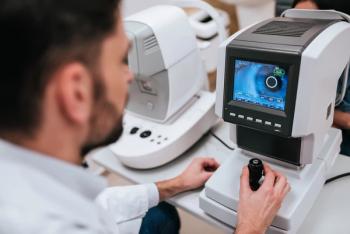
What happened in optometry this week: December 16 - December 20
Catch up on what happened in optometry during the week of December 16-December 20.
Catch up with what Optometry Times shared this week:
Increased air pollution leads to surge in daily eye clinic visits, study finds
By David Hutton, Managing Editor, Ophthalmology Times
The number of daily patient visits at the Sue Anschutz-Rodgers Eye Center significantly rise when ambient particulate matter (PM) levels in the Denver metro region increase, according to a study conducted by ophthalmology researchers at the University of Colorado School of Medicine.
The research team noted the World Health Organization has declared climate change to be “the single biggest health threat facing humanity,” yet there are limited studies on the impact of climate change-related air pollution on ocular health.1
2024 in the rearview: What was the biggest development in optometry this year?
By Carolyn Majcher, OD, FAAO; Melissa Barnett, OD, FAAO, FSLS, FBCLA; Julie Rodman, OD, MS, FAAO; David I. Geffen, OD, FAAO; Mila Ioussifova, OD, FAAO; Nate Lighthizer, OD, FAAO; and Emily Kaiser Maharjan, Assistant Managing Editor
2024 was a year of innovation, both within and without optometry. Over the course of October and November, our editorial team asked optometrists what their favorite breakthrough of the year was. Themes included new dry eye therapies, a rapidly evolving technological landscape, novel treatments for geographic atrophy, and an emphasis on patient care. Here, key opinion leaders Carolyn Majcher, OD, FAAO; Melissa Barnett, OD, FAAO, FSLS; Julie Rodman, OD, MS, FAAO; David Geffen, OD, FAAO; Mila Ioussifova, OD, CNS, FAAO, FOWNS; and Nate Lighthizer, OD; share each of their favorite innovation from this year and how it has shaped the optometric landscape.
Keeping it simple: Putting the patient first
By Jordana Joy, Associate Editor
Among a sea of options, patients have a lot to consider when choosing an eye care provider. Even after deciding on a provider and visiting the practice for their initial eye examination, sifting through said options continues as they deliberate whether they should continue at their current practice or try out a new one.
To get a patient in the chair is one thing, but enticing them to come back is another, according to John Rumpakis, OD, MBA, president and CEO of Practice Resource Management. He said that establishing a method to maintain patient loyalty is at the core of any successful practice and that providers should take a patient-by-patient approach.
Study discovers correlation between fluoxetine and visual acuity improvement in adults with amblyopia
By Lynda Charters
Iranian researchers led by first author Arash Mirmohammadsadeghi, MD, reported that treating adults with amblyopia with fluoxetine resulted in increased visual acuity (VA) in the amblyopic eyes that was significant compared with control eyes.1 He and his colleagues are from the Eye Research Center, Farabi Eye Hospital, Tehran University of Medical Sciences, Tehran, Iran.
They reached this conclusion based on the results of a double-blinded, randomized, clinical trial (IRCT20180316039110N1) performed between November 2017 and December 2022 in the strabismus clinic of Farabi Eye Hospital.
2024 in the rearview: What optometrists learned about AMD
By Jordana Joy, Associate Editor
2024 was an action-packed year for advancements in age-related macular degeneration (AMD) treatments, trials, and research. With the prevalence of AMD projected to continue rising in the coming decades, staying informed on the latest ways to diagnose the disease and slow its progression will remain essential to quality patient care in the field of optometry. Get caught up on what you may have missed with this year’s top content in AMD from Optometry Times.
Newsletter
Want more insights like this? Subscribe to Optometry Times and get clinical pearls and practice tips delivered straight to your inbox.













































